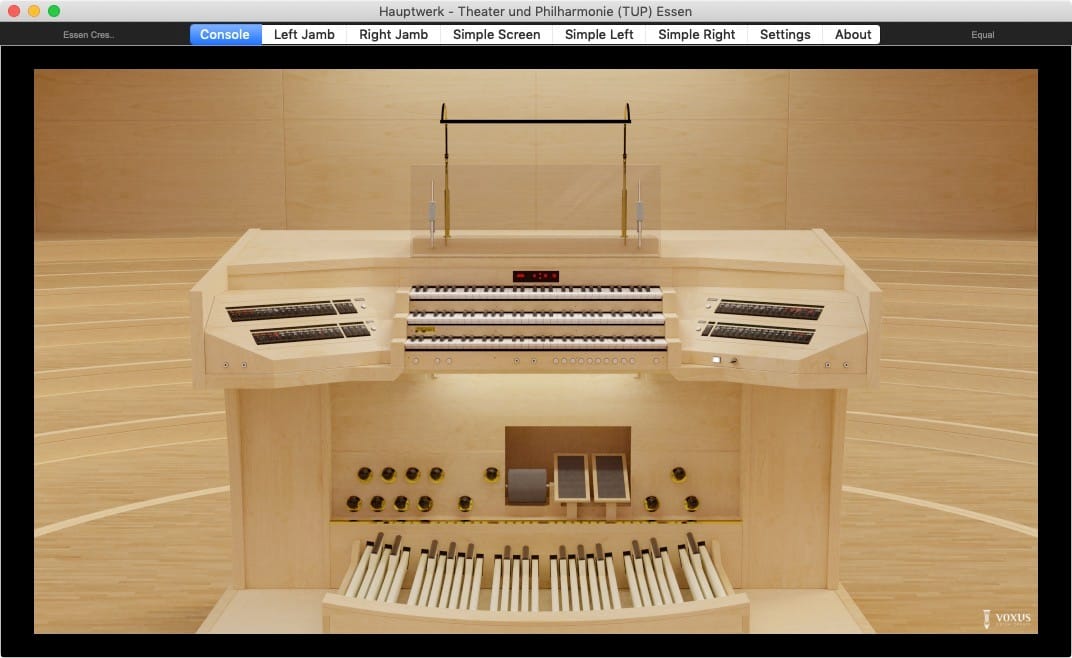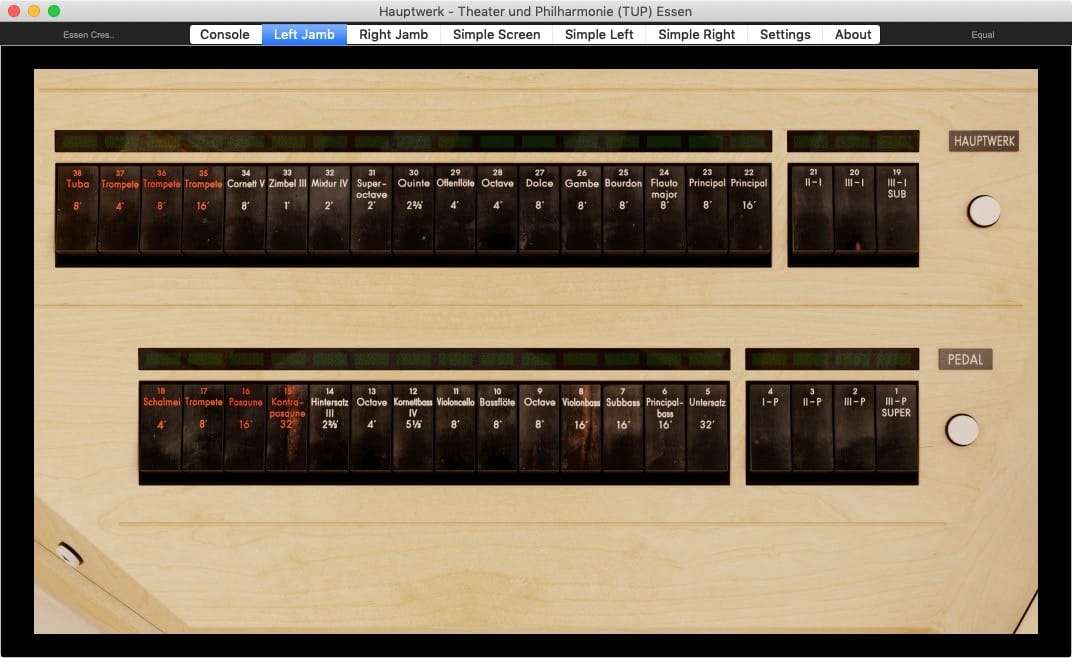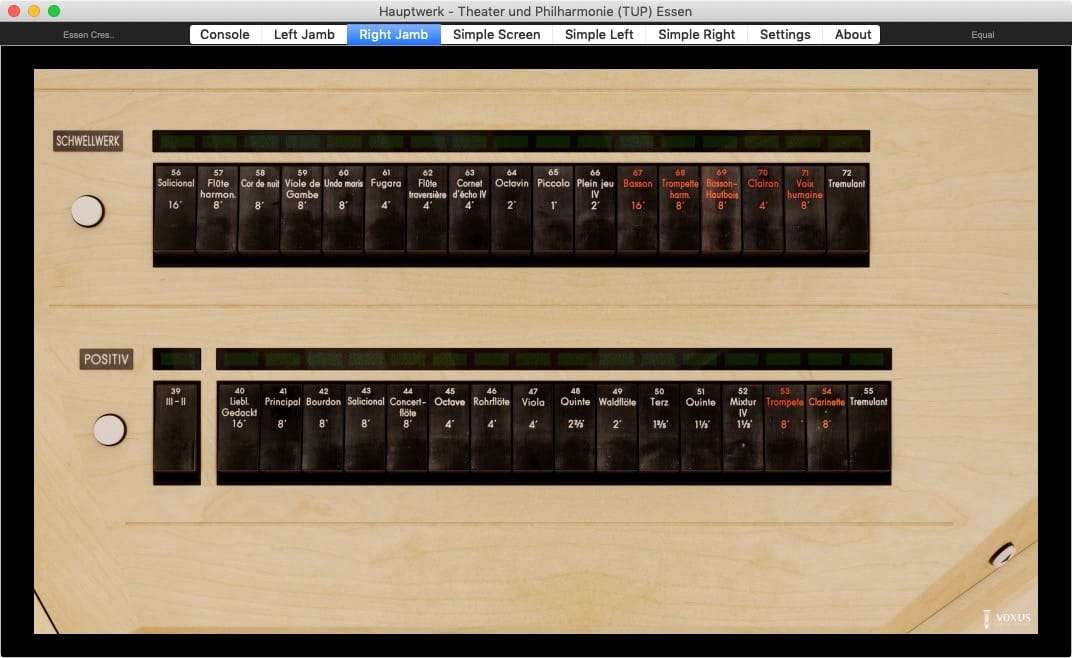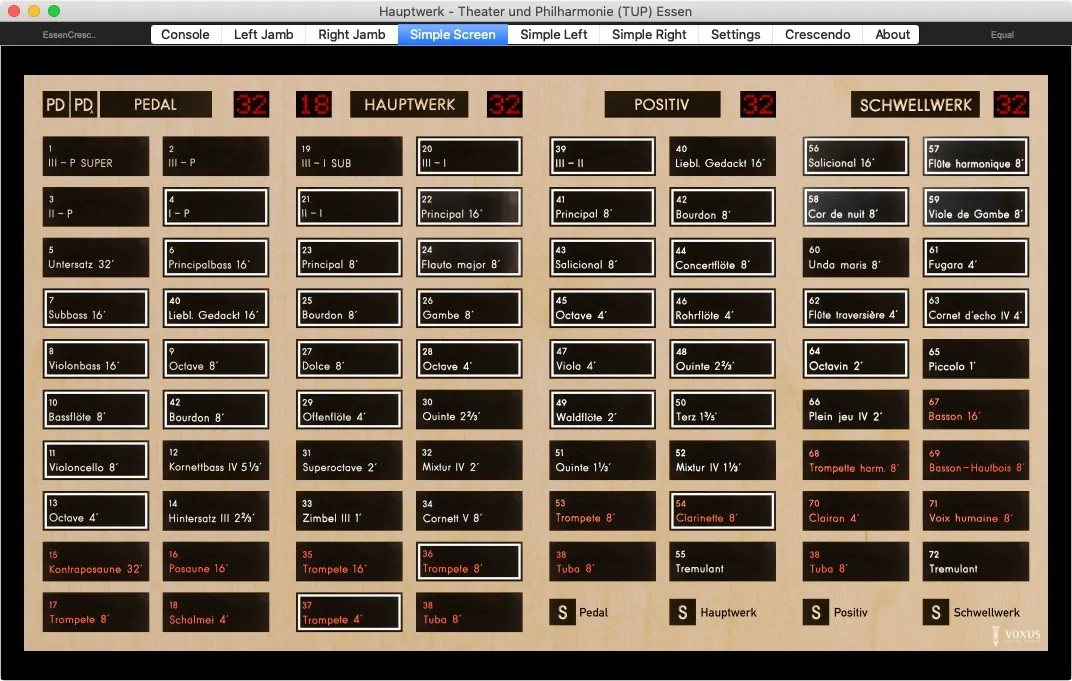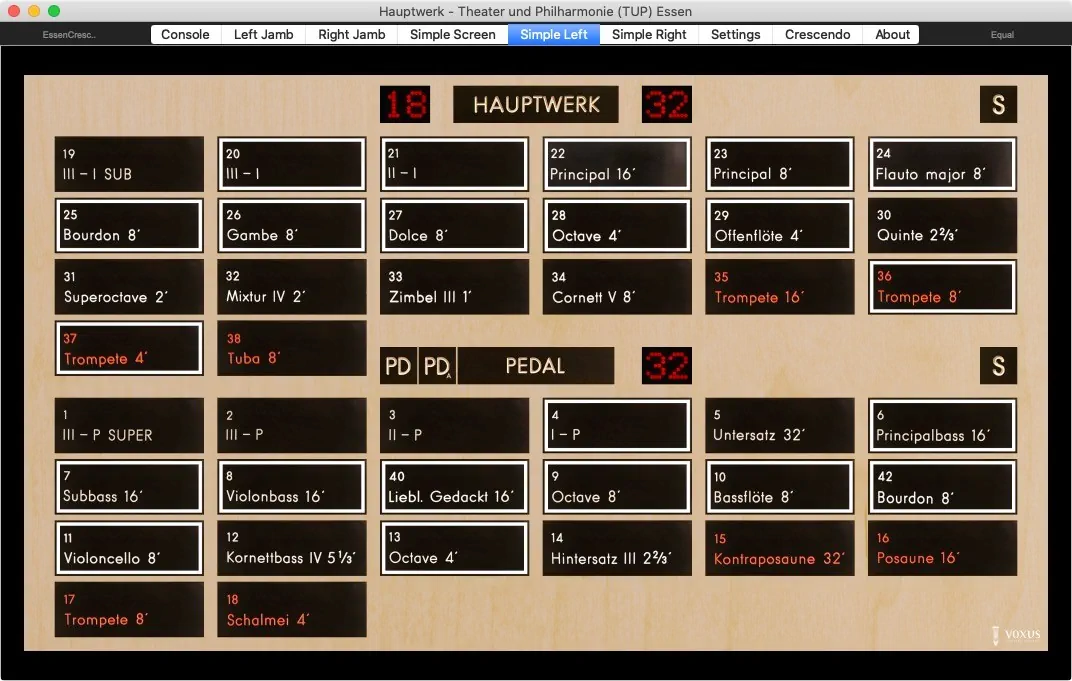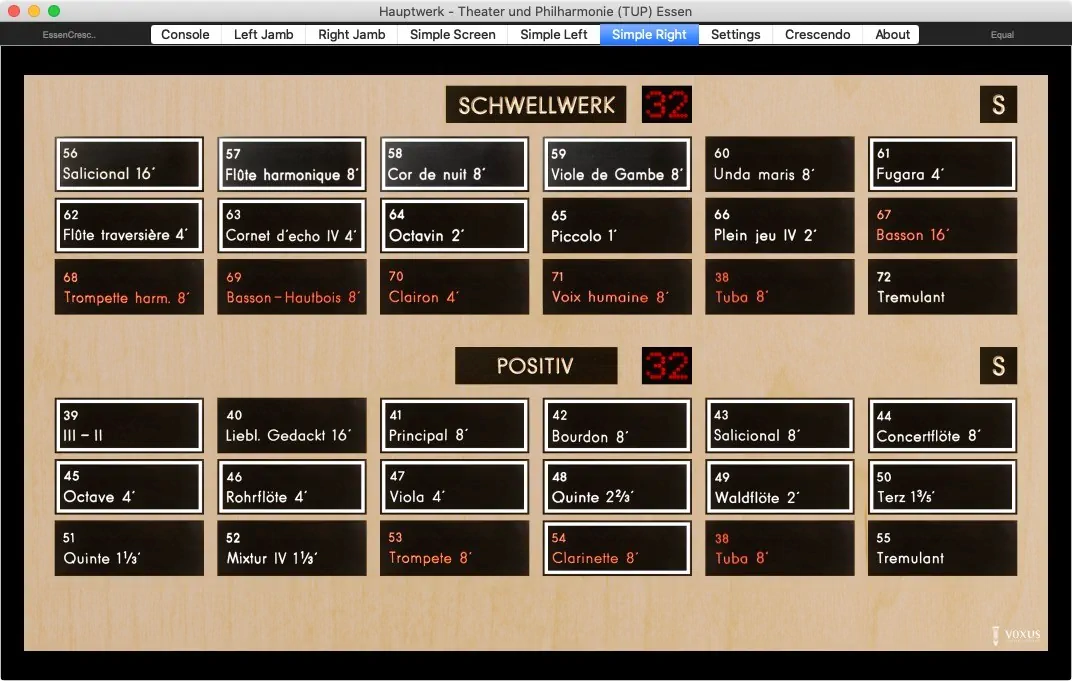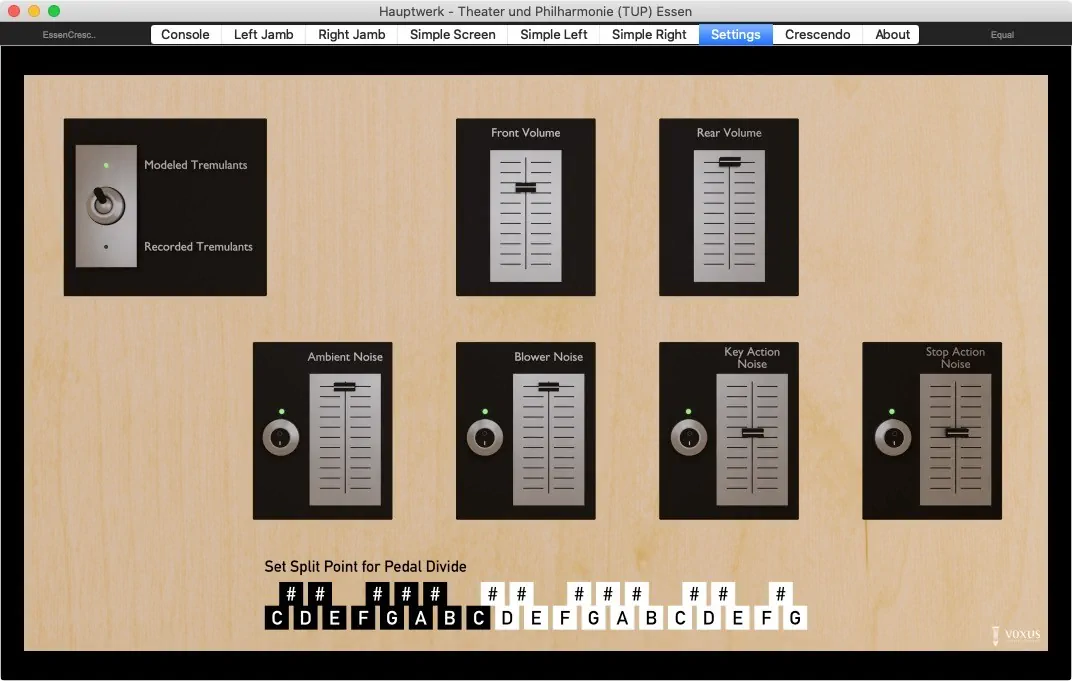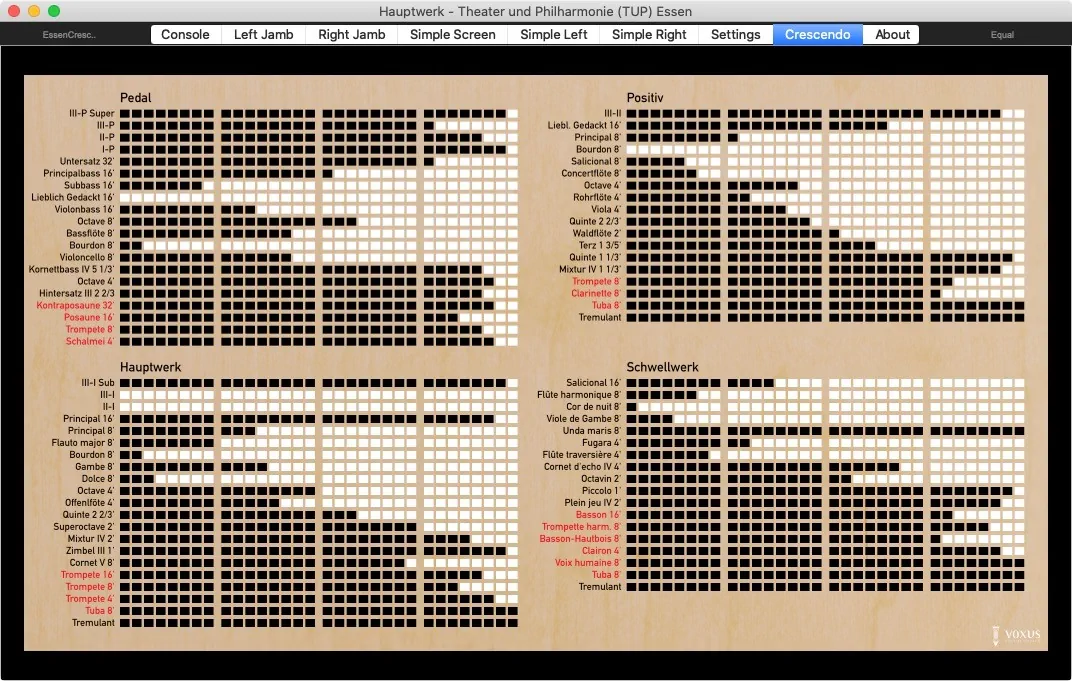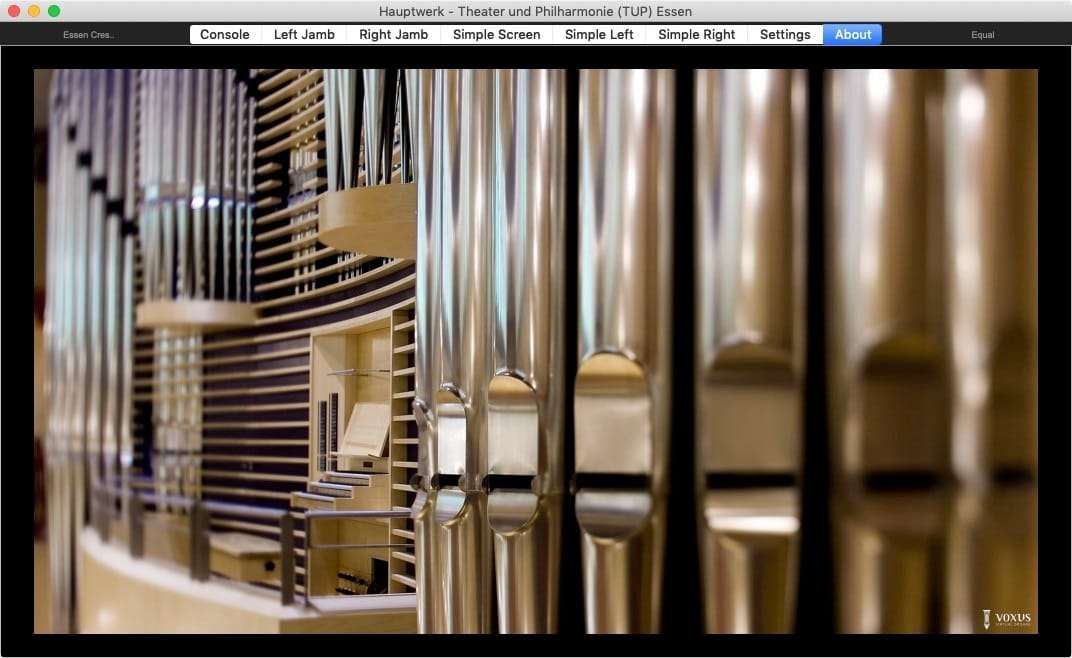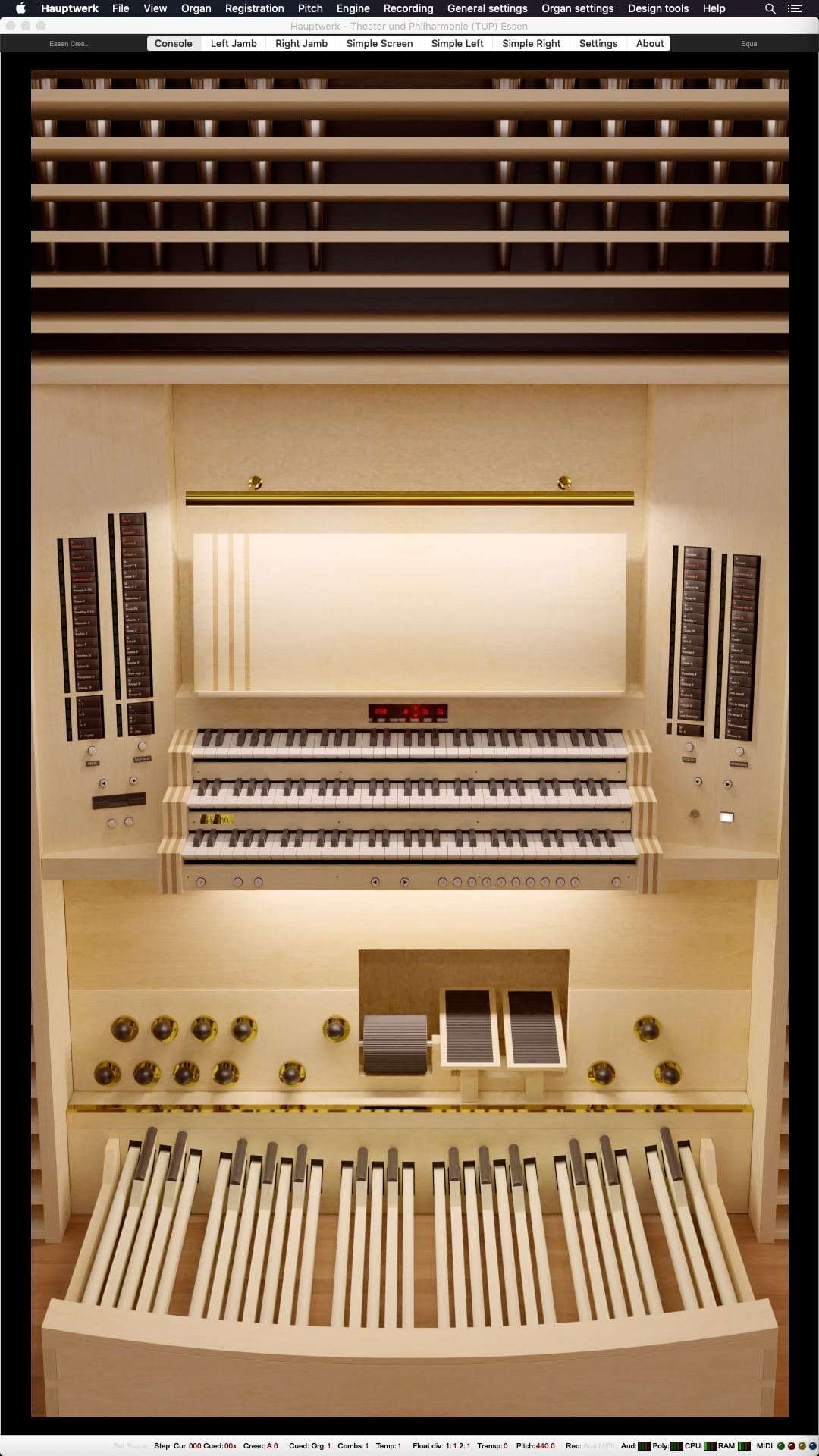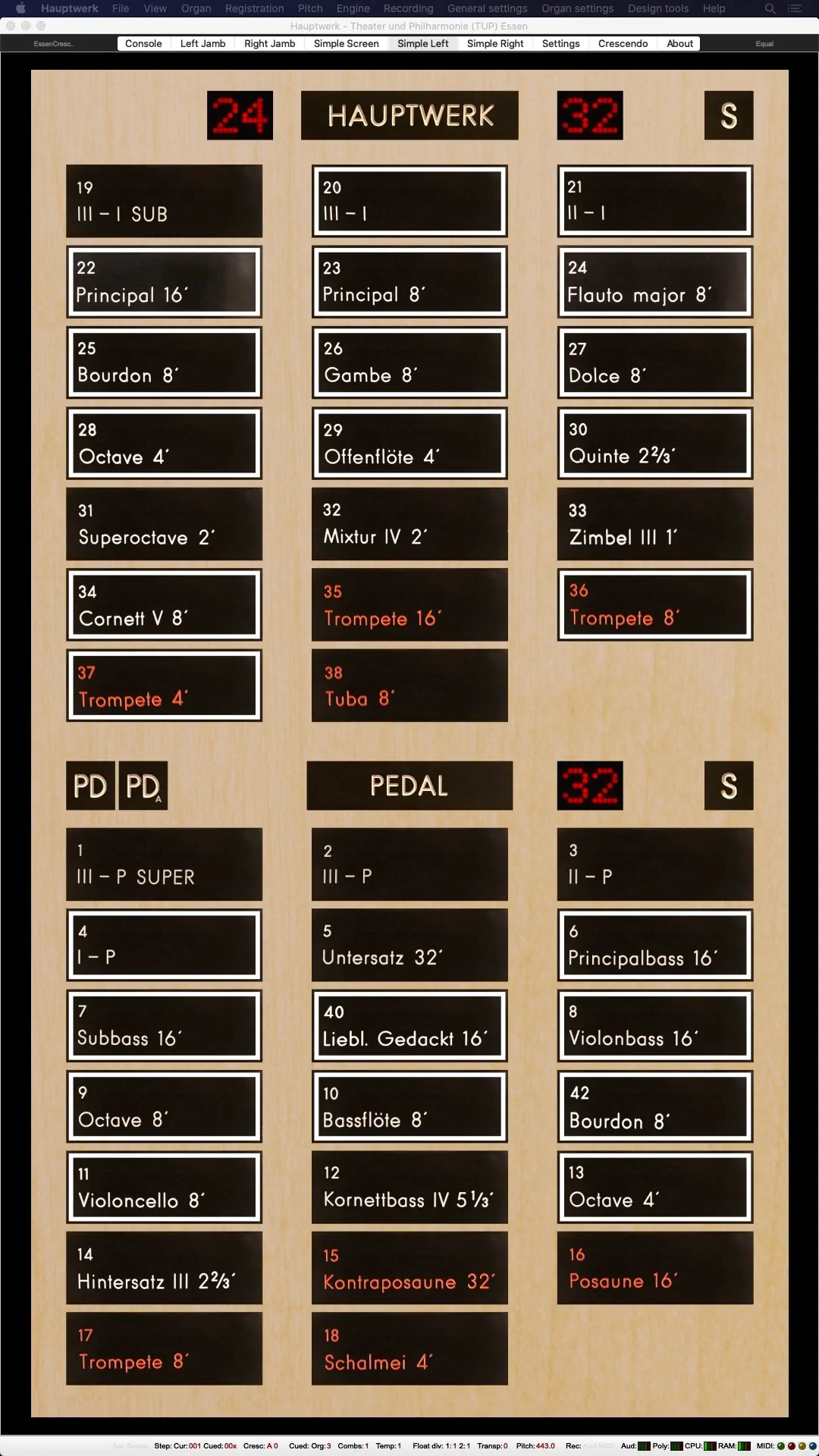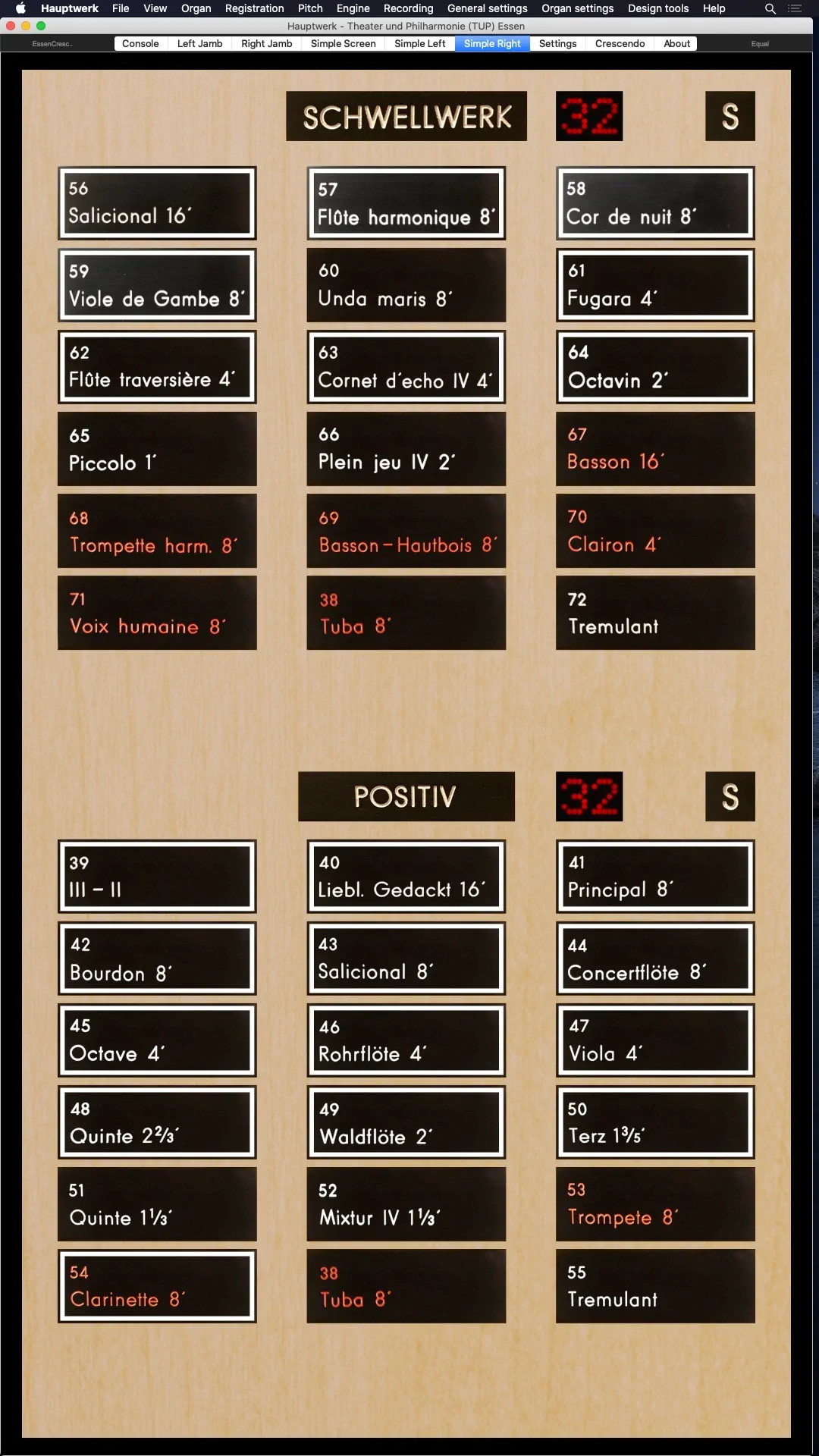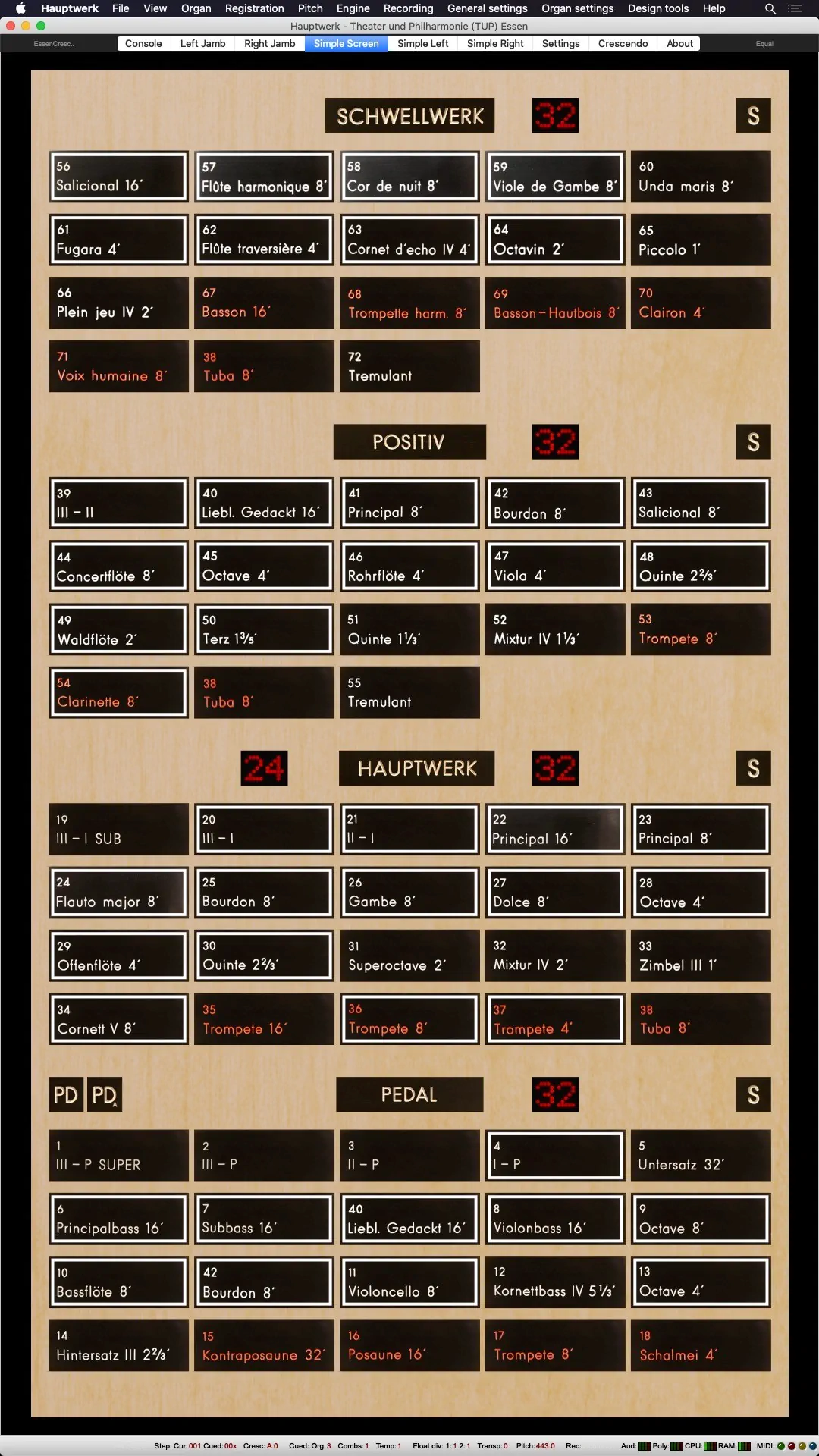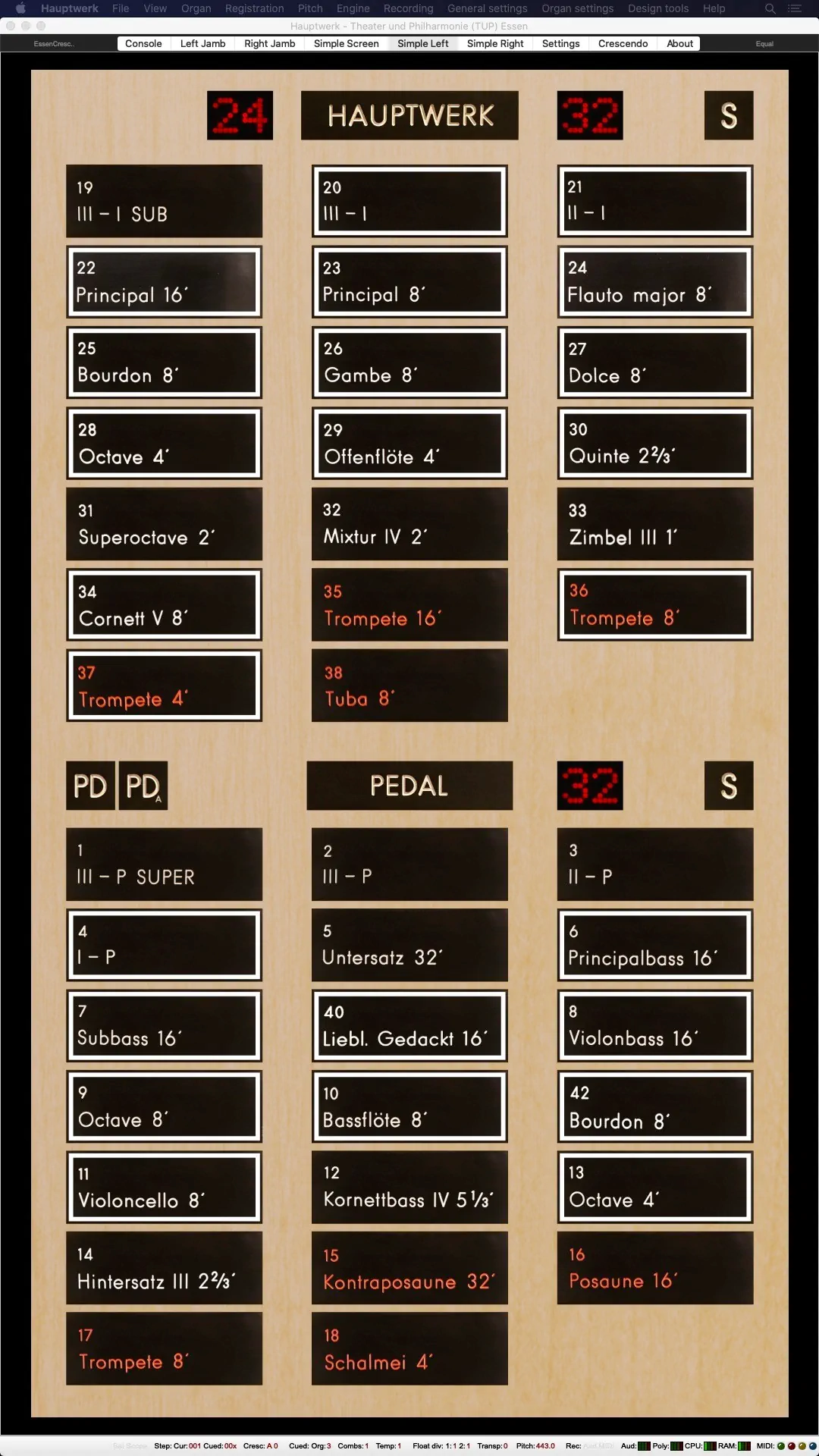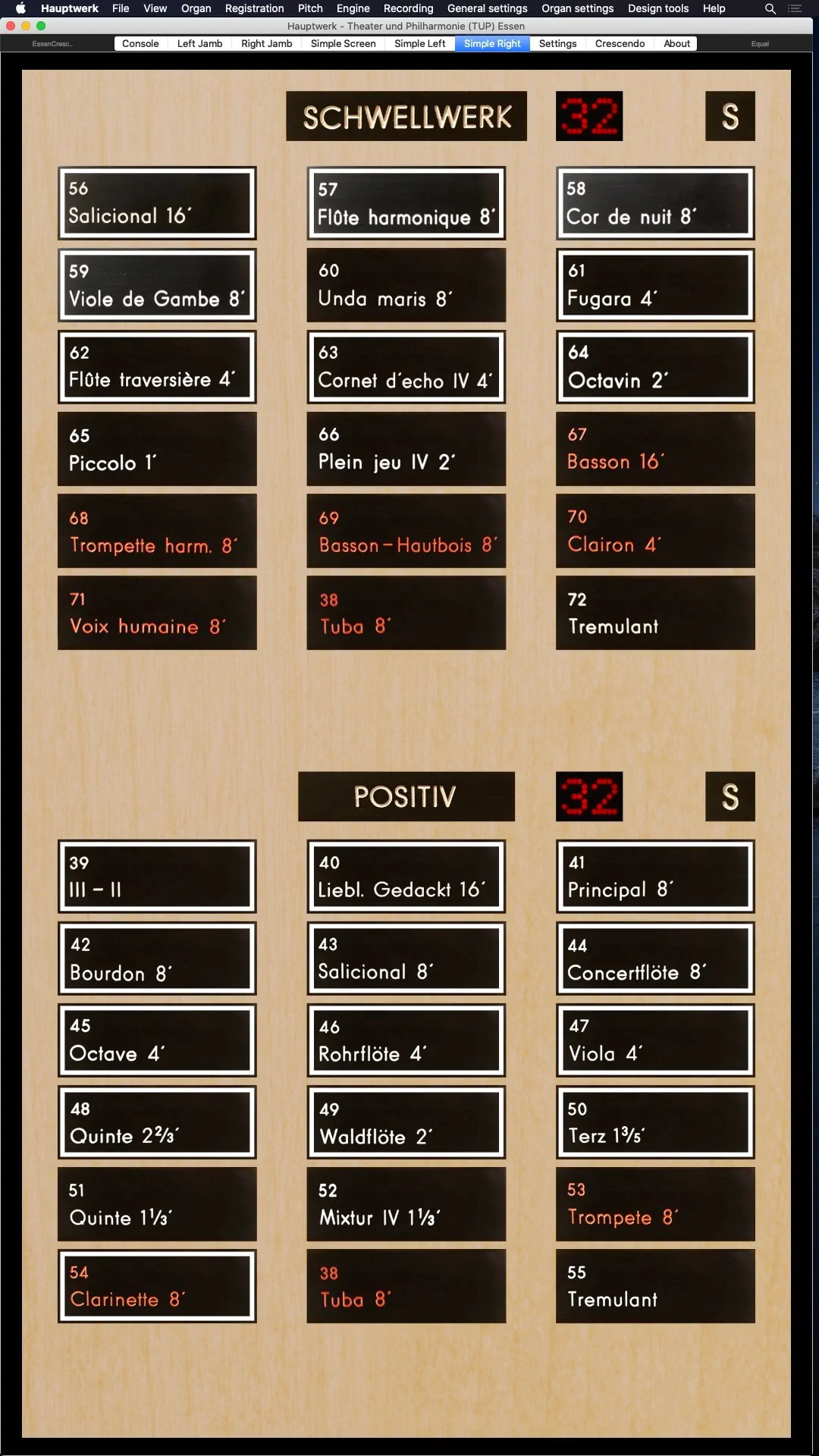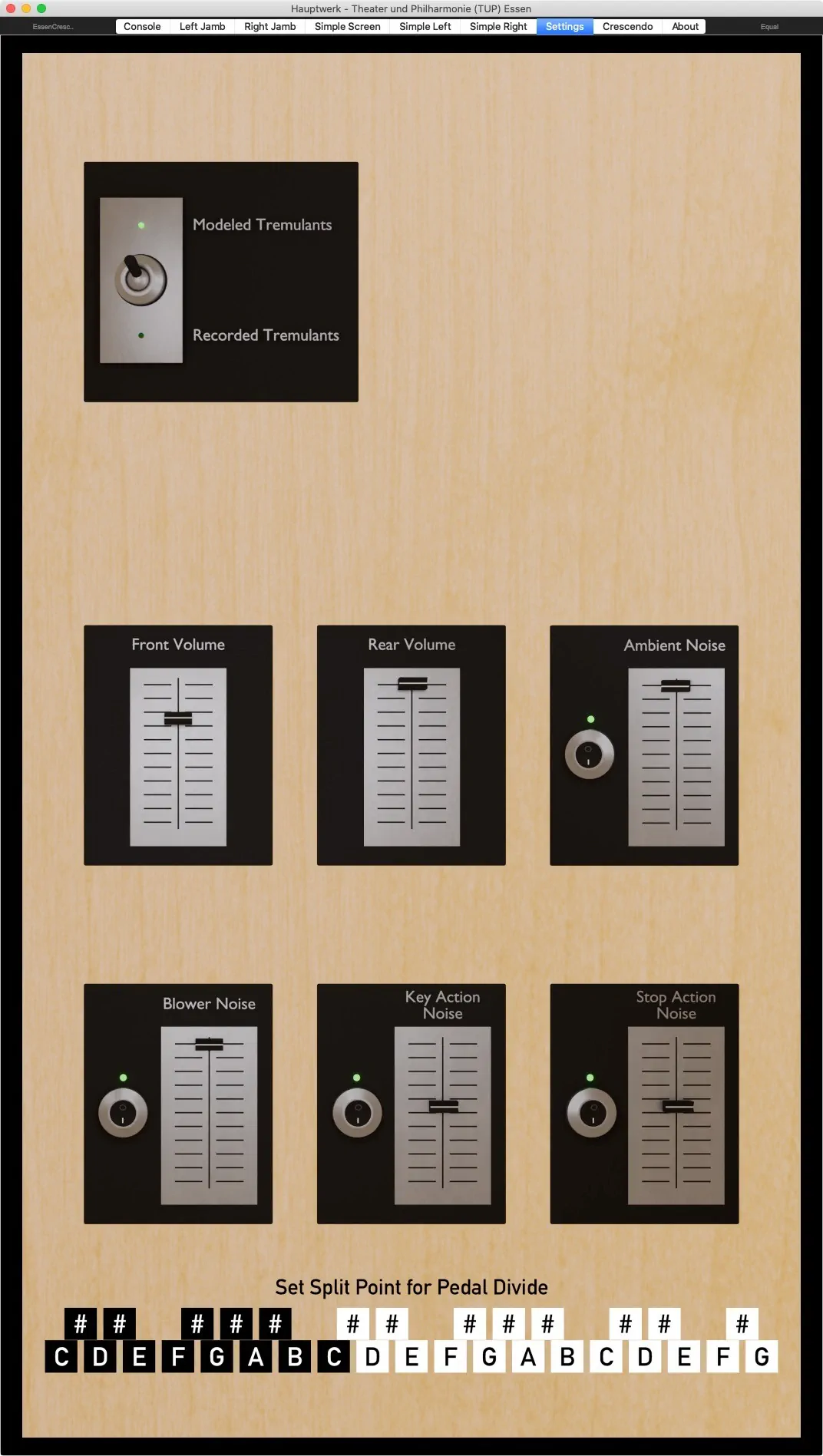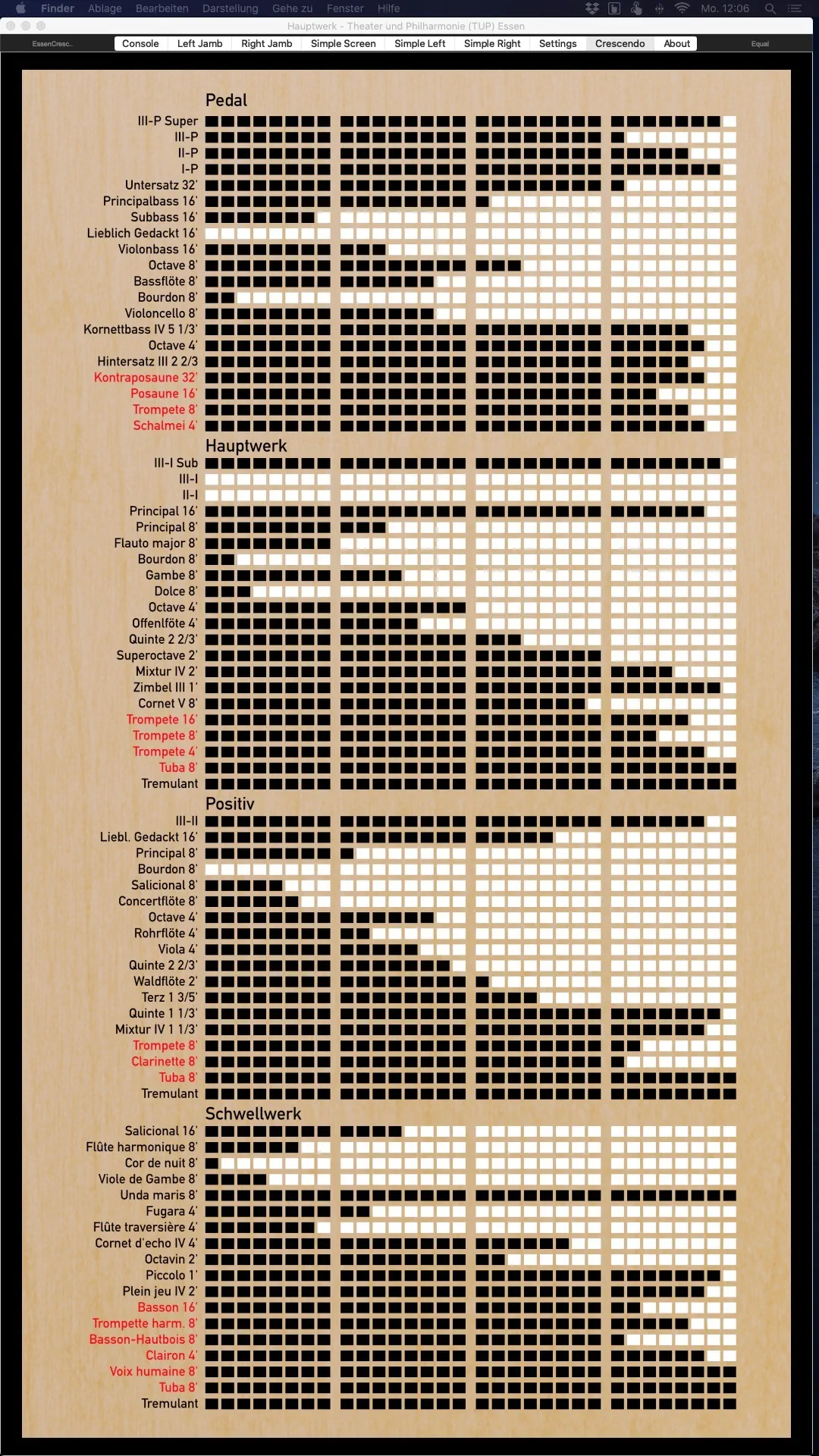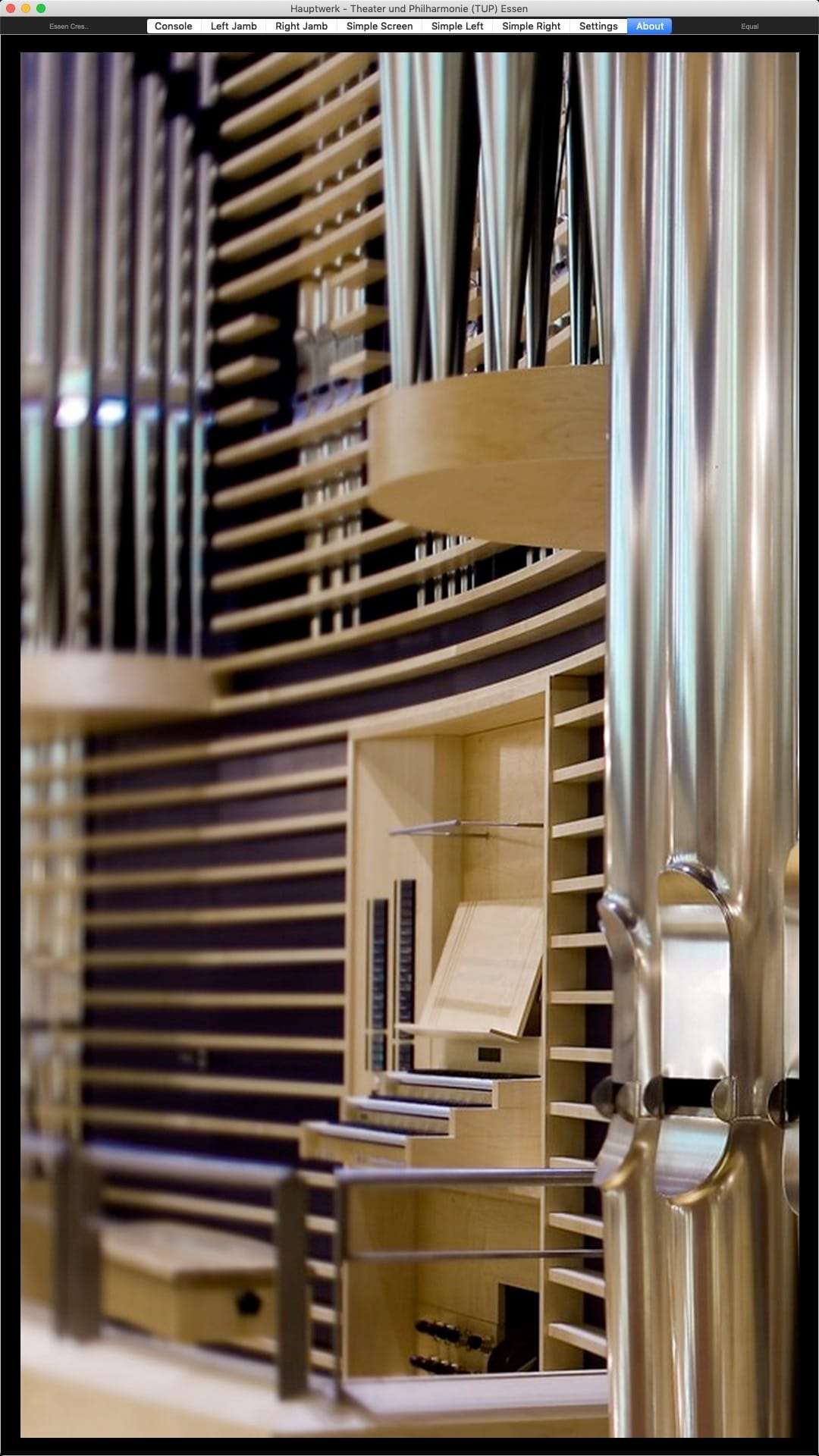This sample set is produced by VOXUS Virtual Organs.
The price for the 2-channel stereo set is 375.00 EUR (446.25 EUR incl. German VAT).
For customers outside the European Union the VAT will be deducted.
Theater und Philharmonie (TUP) Essen
Anyone who visits the Philharmonie Essen for the first time often notices the building as a harmonious blend of “new and timeless.” This was precisely the sentiment expressed by the “Frankfurter Allgemeine Zeitung” in June 2004 when describing the newly opened concert hall. What sets this building apart is its remarkable ability to successfully combine the musically historic hall building with the acoustically and aesthetically modern Philharmonic Hall. This unique fusion has become a hallmark of the Philharmonie Essen.
But what would a house, no matter how beautiful it is, with its “outstanding acoustics” (“Tagesspiegel”), be without its great artists? Here, too, the Philharmonie continues a tradition spanning over a century. After all, it was Richard Strauss who opened the Saalbau in 1904. And just two years later, Gustav Mahler took the podium to conduct the premiere of his own Sixth Symphony. Tragically, the Saalbau was largely destroyed during World War II. However, it was rebuilt at the beginning of the 1950s, incorporating preserved elements.
After a meticulous renovation and a complete redesign of the concert hall, the building was ceremoniously reopened on June 5, 2004. Ever since, audiences in the acoustically exceptional Philharmonie have been delighted by the wonderful music that fills the hall.
The Kuhn Organ
The magnificent Kuhn organ, the pinnacle of the Philharmonie, was inaugurated on September 24, 2004, just a few months after the grand opening of the building. Renowned Swiss organ building company Kuhn meticulously crafted this work of art, boasting an impressive 4502 pipes, wrote:
“When building the new concert hall organ for the Essen Philharmonic, we had to meet many different demands: The work had to reflect the international, sophisticated character of the place without neglecting the convincing principles of traditional organ building. We also wanted to incorporate the musicians’ suggestions while remaining true to our own ideals. The symphonic instrument with mechanical action and 4502 pipes combines all these goals. As an excellent partner of the orchestra, this organ is capable of giving gravity and sonority to a wide range of musical styles.
The facade is not bound to the work, which allows certain creative freedom. These were also exploited in intensive cooperation with the architects. We were able to give the ‘Tuba’ a very special place: horizontally, it shines under the gallery. In order to optimally meet the requirements of modern concert business, the instrument is equipped with an additional mobile console.
Thanks to balancers and Kuhn levers, the high wind pressures are kept at an easily playable level. Two additional octave couplers support the effective swell so that the tonal resources can be used to the best advantage. In contrast to the church organ, the sound gradation is based on the hierarchy of the manuals; mensuration and intonation are designed for ensemble effect.
What existed in the beginning only as an idea in people’s heads and on paper has been transformed into reality by our organ builders, pipe makers and carpenters in untiring detail work. They have paved the way for artistic flights of fancy, moments of evening gowns and unforgettable performances”.
Stop List
I. Hauptwerk
Principal 16′
Principal 8′
Flauto major 8′
Bourdon 8′
Gambe 8′
Dolce 8′
Octave 4′
Offenflöte 4′
Quinte 2 2/3′
Superoctave 2′
Mixtur 4f. 2′
Zimbel 3f. 1′
Cornett 5f. (ab f0) 8′
Trompete 16′
Trompete 8′
Trompete 4′
Tuba (en chamade) 8′
II. Positiv
Lieblich Gedackt 16′
Principal 8′
Bourdon 8′
Salicional 8′
Concertflöte 8′
Octave 4′
Rohrflöte 4 ‘
Viola 4 ‘
Quinte 2 2/3′
Waldflöte 2′
Terz 1 3/5′
Quinte 1 1/3′
Mixtur 4f. 1 1/3′
Trompete 8′
Clarinette 8’
Tuba (en chamade) 8′ *
Tremulant
III. Schwellwerk
Salicional 16′
Flûte harmonique 8′
Cor de nuit 8′
Viole de Gambe 8′
Unda maris 8′
Fugara 4′
Flûte traversière 4′
Cornet d’écho 4f. (ab C) 4′
Octavin 2′
Piccolo 1′
Plein jeu 4f. 2′
Basson 16′
Trompette harmonique 8′
Basson-Hautbois 8′
Voix humaine 8′
Clairon 4′
Tuba (en chamade) 8′ *
Tremulant
P. Pedal
Untersatz 32′
Principalbass 16′
Subbass 16′
Violonbass 16′
Lieblich Gedeckt 16′ (Pos) *
Octave 8′
Bassflöte 8′
Violoncello 8′
Bourdon 8′ (Pos) *
Kornettbass 4f. 5 1/3′
Octave 4′
Hintersatz 3f. 2 2/3′
Kontraposaune 32′
Posaune 16′
Trompete 8′
Schalmei 4′
* Sample set extension (only available on Simple Screen)
Manual compass: C – c⁴
Pedal compass: C – g¹
Couplers
II-I, III-I, III-II, III-I subI-P, II-P, III-P, III-P super
Sample Set
The sample set has many special and unique features, including:
- Four channels (2 stereo channels) of chromatically sampled stop-by-stop pipes, including recorded tremulants for all Positiv and Schwellwerk stops.
- All screens are optimized for single and dual touchscreens in landscape and portrait format in 4K resolution.
- The sample set offers multiple photorealistic screens. The original organ has two consoles: a mechanical console on the balcony and a mobile console on the stage. Both consoles have been implemented as virtual screens. The landscape screen shows the mobile console, and the portrait screen the mechanical console. The photorealistic dual jambs also show the jambs of the mobile console (dual landscape screens) and the mechanical console (dual portrait screens).
- Simple screens. Simple screens in both landscape and portrait orientation are available for single and dual-monitor systems.
- The sample set offers modeled (all manual divisions) and recorded tremulants (Positiv and Schwellwerk).
- The sample set adds two carefully selected transmissions to the pedal stops. Moreover, the Tuba 8 can be also played from the Positiv and the Schwellwerk.
- All 4 divisions are enclosed.
New features of version 2:
- The crescendo and the enclosures can now be also MIDI learned on the simple screens.
- A user-programmable crescendo.
- Sostenuto for all 4 divisions.
- A user-adjustable fixed and automatic pedal divide (the latter not available in the US).
RAM Requirements
4-channel, 24-bit lossless: 36,627 MB (36.7 GB) * best option for computers with 64+ GB RAM
4-channel, 20-bit lossless: 33,675 MB (33.7 GB)
4-channel, 16-bit lossless: 18,908 MB (19.0 GB)
4-channel, front samples 24-bit lossless, rear samples 20-bit lossless: 35,367 MB (35.4 GB)
4-channel, front samples 20-bit lossless, rear samples 16-bit lossless: 26,192 MB (26.2 GB)
4-channel, 24-bit lossless w/o sampled tremulants: 24,059 MB (24.1 GB) * best option for computers with 32 GB RAM
4-channel, 20-bit lossless w/o sampled tremulants: 21,829 MB (21.9 GB)
4-channel, 16-bit lossless w/o sampled tremulants: 12,515 MB (12.6 GB)
4-channel, front samples 24-bit lossless, rear samples 20-bit lossless w/o sampled tremulants: 23,096 MB (23.1 GB)
4-channel, front samples 20-bit lossless, rear samples 16-bit lossless w/o sampled tremulants: 17,106 MB (17.2 GB)
2-channel, front samples 24-bit lossless: 18,801 MB (18.9 GB)
2-channel, front samples 20-bit lossless: 17,109 MB (17.2 GB)
2-channel, front samples 16-bit lossless: 9,826 MB (9.9 GB)
2-channel, front samples 24-bit lossless without sampled tremulants: 12,445 MB (12.5 GB) * best option for computers with 16 GB RAM
2-channel, front samples 20-bit lossless w/o sampled tremulants: 11,179 MB (11.2 GB)
2-channel, front samples 16-bit lossless w/o sampled tremulants: 6,588 MB (6.6 GB)
The RAM requirements in bold are the recommended ones, the ones in italic are generally possible but should only be used on computers with severe RAM limitations.
Audio Samples
Gottfried Thore Drywa
Full Review of the Sample Set
Paul Fey
Tour of Stops
Richard McVeigh
Organ Recital Theater und Philharmonie Essen
Gottfried Thore Drywa
Charles Tourenmire (arr. par Maurice Duruflé): Improvisation sur Victimae paschali laudes
James Flores
William Walton arr. Herbert Murrill: Crown Imperial
César Franck: Pièce héroique
